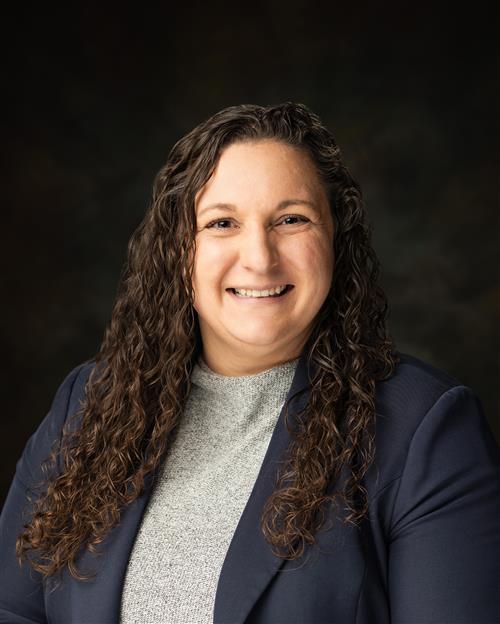- Stillwater Public Schools
- Federal Programs
Contact Us
-
Phone:405.533.6330 314 S Lewis St, Stillwater, OK 74074
SPS's Title I Schools
-
- Highland Park
- Skyline
- Will Rogers
- Stillwater Middle School
- Stillwater Junior High School
Federal Education Program Funding
-
TITLE I, Part A Supporting Basic Programs Operated by Local Educational Agencies
Purpose
The goal of this program is to provide financial assistance to LEAs and schools with high numbers or percentages of children from low-income households to help ensure all children meet state academic standards. Funds are allocated through 4 statutory formulas based primarily on census poverty records. Unless a participating school is operating a school-wide program (available to schools where children from low-income families make up at least 40% of enrollment), the school must focus services on children who are failing or most at risk of failing to meet state academic standards. A “proportionate share” of funds must be available to eligible children enrolled in private schools.
Audience
SEAs, LEAs, schools (public and private), students receive funding by formula involving poverty and population. Eligible schools enrolling >40% of children from low income families eligible to use funds for schoolwide programs. Eligible schools enrolling <40% or that decline school-wide programs can offer targeted assistance to individual students.
TITLE II, Part A
Purpose
The purpose of this program is to increase academic achievement by improving teacher and principal quality. This is done by increasing the number of highly qualified teachers, principals and assistant principals in classrooms/schools through professional development, support for new teachers and other activities.
Audience
Main Audience: teachers, principals, and other “school leaders” Secondary Audience: all students benefit from highly qualified teachers and principals through increased academic achievement.
TITLE III, Part A English Learners & Immigrant Ed
Purpose
The overarching purpose is to ensure that English learner (EL) students, including immigrant children and youth, attain English language proficiency and meet the same challenging state academic standards that other students are expected to meet. LEAs must use Title III funds to supplement state language instruction educational programs, designed to assist EL students’ achievement goals. The state educational agency (SEA), LEAs, and schools are accountable for increasing the English proficiency and core academic content knowledge of EL students.
Audience
LEAs—which include school districts, county offices of education, and direct-funded charter schools—that enrolled one or more EL and/or immigrant students during the previous fiscal year are eligible. In the case of immigrant education funds, the LEA must also meet the enrollment criteria for eligible immigrant students.
TITLE IV, Part A Student Support & Academic Enrichment
Purpose
To improve student’s academic achievement by increasing the capacity of States, local educational agencies, schools and local communities to: 1. Provide all students with access to a well-rounded education; 2. Improve school conditions for student learning; and 3. Improve the use of technology in order to improve the academic achievement and digital literacy for all students.
Audience
SEAs, LEAs, Schools and local communities may use funds towards programs aimed at providing a well rounded education for all students. These programs may include STEM programs, music and arts programs, Foreign language instruction, which assists EL students, Accelerated learning programs - such as AP, IB, or other college prep courses to decrease high school drop-out rates, and increase high school graduation rates and college-entrance rates, Civic instruction, college and career counseling, Social emotional learning programs, Environmental education, Activities to Support Safe and Healthy Students, Safe and Supportive Learning Environments, Student Physical and Mental Health, etc.
TITLE V, Part B Rural Education Initiative
Purpose
The purpose of the program is to provide rural LEAs with financial assistance to fund initiatives aimed at improving student academic achievement.
Audience
Rural LEAs meeting specific population and "locale code" requirements dependent on classification by NCES.
TITLE VI, Part A Indian, Native Hawaiian, and Alaska Native EducationPurpose
Title VI, Part A is designed to ensure that American Indian, Native Hawaiian and Alaska Native students meet challenging state academic content and student academic achievement standards, as well as meet the unique culturally related needs.
Audience
Indian, Native Hawaiian, and Alaska Native students - preschool to graduate school.
TITLE VII, Part B McKinney-Vento, Education for Homeless Children and Youth
Purpose
The program supports an office for coordination of the education of homeless children and youths in each state, which gathers comprehensive information about homeless children and youths and the impediments they must overcome to regularly attend school. These grants also help SEAs ensure that homeless children, including preschoolers and youths, have equal access to education. States must make competitive subgrants to LEAs to facilitate the enrollment, attendance, and success in school of homeless children and youths. This includes addressing problems due to transportation needs, immunization and residency requirements, lack of birth certificates and school records, and guardianship issues.
Audience
Includes: children and youths who are sharing the housing of other persons due to loss of housing, economic hardship, or a similar reason; are living in motels, hotels, trailer parks, or camping grounds due to the lack of alternative adequate accommodations; are living in emergency or transitional shelters; or are abandoned in hospitals; children and youths who have a primary nighttime residence that is a public or private place not designed for or ordinarily used as a regular sleeping accommodation for human beings…; children and youths who are living in cars, parks, public spaces, abandoned buildings, substandard housing, bus or train stations, or similar settings; and migratory children… who qualify as homeless for the purposes of this subtitle because the children are living in circumstances described above.
-
Contact Information for the U.S. Department of Justice Office of the
Inspector General
Office of the Inspector General
U.S. Department of Justice
Office of the Inspector General
950 Pennsylvania Avenue, N.W.,
Suite 4706
Washington, D.C. 20530-0001
Phone: (202) 514-3435
Fax: (202) 514-4001
Webpage:
Office of the Inspector General: https://oig.justice.gov/
Office of the Inspector General Contact Information:
https://oig.justice.gov/about/directory.htm


